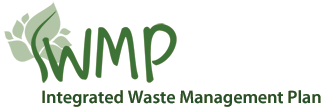2.2 Situation analysis
The main objective of a situation analysis is to analyse and quantify all aspects pertaining to the management of waste within a particular municipality’s boundary (including all types of settlements). It includes the current status with regards to the delivery of waste services, number of residents in that municipality, demographic profile and socio-economic composition. It also includes the amount and type of waste that is being generated, recycled, recovered, treated and disposed. Information on resources i.e. financial and human capital including equipment must also be indicated under this section. Chapter 3 section 12 of the Waste Act stipulates that a situation analysis must at least include the following:
- A description of the population and development profiles of the area to which the plan relates;
- An assessment of the quantities and types of waste that are generated in the area;
- A description of the services that are provided, or that are available, for the collection, minimisation, re-use, recycling, and recovery, treatment and disposal of waste, and
- The number of persons in the area who are not receiving waste collection services
- 2.2.1 Demographics (population and development profiles)
- 2.2.2 Waste quantities and types
- 2.2.3 Determining current domestic waste generation per capita
- 2.2.4 Estimating future waste generation rates and quantities
- 2.2.5 Waste recycling, treatment and disposal
- 2.2.6 Status of waste collection services
- 2.2.7 Financing of waste management
Main menu - nice menus
Table of contents
- Executive Summary
- List of figures
- List of boxes
- List of tables
- List of graphs
- List of acronyms
- 1. Introduction
- 2. Contents of the IWMP's
- 2.1 Defining the geographical area
- 2.2 Situation analysis
- 2.2.1 Demographics (population and development profiles)
- 2.2.2 Waste quantities and types
- 2.2.3 Determining current domestic waste generation per capita
- 2.2.4 Estimating future waste generation rates and quantities
- 2.2.5 Waste recycling, treatment and disposal
- 2.2.6 Status of waste collection services
- 2.2.7 Financing of waste management
- 2.3 Desired end state
- 2.4 Identify, evaluate and select alternatives
- 3. Communication and stakeholder participation
- 4. Implementation instruments
- 5. Approval process
- 6. Reporting on implementation, monitoring and review
- 7. References

